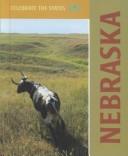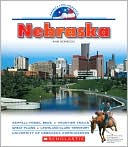I’ve read biographies of soldiers, of statesmen, of starlets. I’ve read biographies of philanderers, philanthropists, and even families. But until The Narnian, I’d never read a biography of a mind.
Unlike the more traditional biography, which seeks to relate the events of an individual’s life first and foremost, The Narnian chooses to focus on how the events of C.S. Lewis’s life shape and are shaped by Lewis’s powerful imagination and thought life.
As a fan of Lewis’s fiction dating from my early elementary years, later turned a lover of his more philosophical works, I took great delight in reading The Narnian. Unlike the misnamed C.S. Lewis: Chronicler of Narnia (My Review), The Narnian is shot throughout with references to Lewis’s imaginative works.
It has now been months (unfortunately) since I read The Narnian, and the fine details of the book have faded from my mind. I cannot remember the specific points that Jacobs makes better than other biographers or the characteristic manner in which he made his points. I cannot give details of his writing style. Such details have been lost in the hubbub of moving.
But one thing has not been lost—my sense of deep gratitude to Jacobs for his fine biography of a mind that has so shaped my own mind through his writings, both fiction and philosophy. Jacobs treats Lewis respectfully as he seeks to describe Lewis’s life and the development of his imagination. Jacobs does not blindly bow before Lewis’s memory as though Lewis were incapable of doing wrong—but he also avoids the trap of pigeonholing Lewis into one or another category, suggesting that he was a master at X (philosophy or apologetics or criticism of Medieval literature) while pooh-poohing the rest of his life and work.
This is truly a wonderful biography of Lewis, presented in an engaging and honest manner. I definitely recommend it.
Janet also read and reviewed The Narnian over at Across the Page. Her review is a bit more in-depth with hints of what can be found within the book. Check it out!
Rating: 4 stars
Category: Biography
Synopsis:A biography of C.S. Lewis that focuses on his inner life–his mind and imagination.
Recommendation: If you’ve read and enjoyed Lewis, be sure to check out this book for a fantastic look at the man behind the books you’ve read.
Visit my books page for more reviews and notes.




 I read Bjorkland’s book first. By halfway through the book, I had to figure out who this author was. Surely, she had to be a native Nebraskan, I thought. She described Nebraska so accurately, so fully. The back cover informed me that she was not a Nebraskan.
I read Bjorkland’s book first. By halfway through the book, I had to figure out who this author was. Surely, she had to be a native Nebraskan, I thought. She described Nebraska so accurately, so fully. The back cover informed me that she was not a Nebraskan.  Heinrichs’ Nebraska, on the other hand, reads as though it came straight from the Nebraska government website, giving the facts and the nicely sanitized details specifically designed to sell our state rather than accurately portray it. What’s more, unlike Bjorkland’s book, this book patronizes students, talking with the “twaddle” tone Charlotte Mason devotees so abhor.
Heinrichs’ Nebraska, on the other hand, reads as though it came straight from the Nebraska government website, giving the facts and the nicely sanitized details specifically designed to sell our state rather than accurately portray it. What’s more, unlike Bjorkland’s book, this book patronizes students, talking with the “twaddle” tone Charlotte Mason devotees so abhor. 

